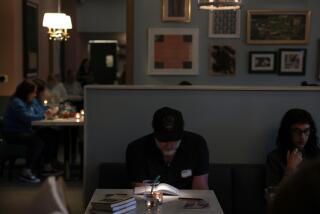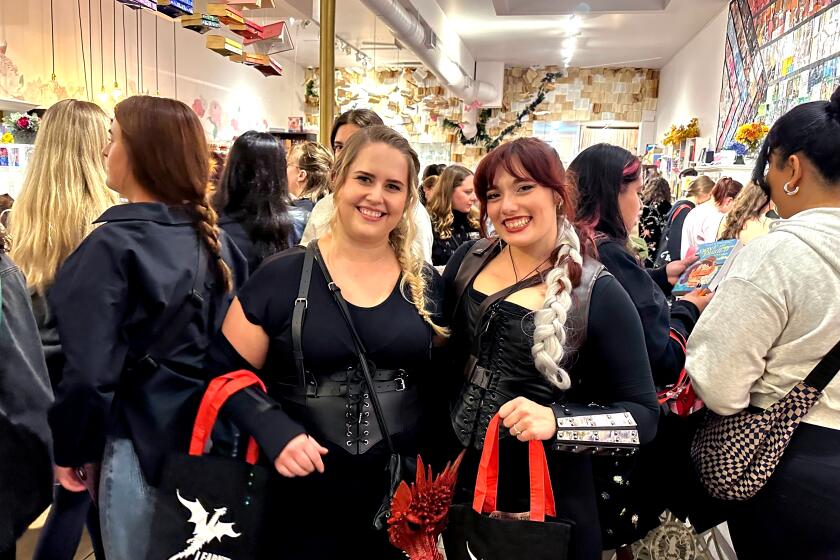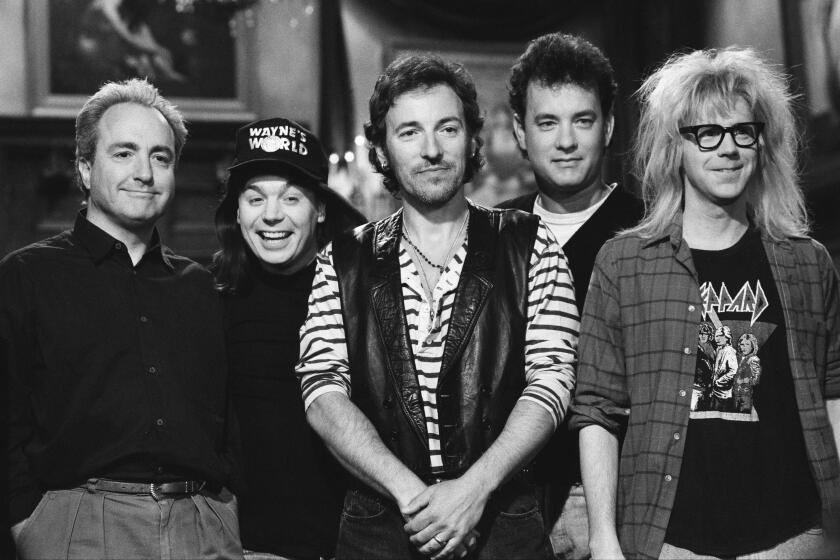First Fiction
- Share via
The Dante Club
Matthew Pearl
Random House: 374 pp., $24.95
Midway upon the journey through this sprawling thriller, set in the intellectual hothouse of 1865 Boston, Matthew Pearl treats us to some welcome comic relief. J.T. Fields, head of the redoubtable house of Ticknor & Fields, barks at James Russell Lowell, poet of largely forgotten verses, “Lowell, you’ll kill someone with that! As your publisher, I order you to put that gun away at once!”Alas, it’s hard to tell whether this wonderfully improbable snippet of dialogue is an example of the author’s mischief or another of the book’s heavy-handed cliches. “The Dante Club,” the unlikely offspring of Caleb Carr’s “The Alienist” and Louis Menand’s “The Metaphysical Club,” occupies an uneasy nether realm between sendup and lecture as it transforms Boston’s literary elites into an amateur band of sleuths trying to crack a serial murder case that has the city in a panic. If you think it’s amusing to imagine the bookish Fields and Lowell tussling over a hunting rifle, then picture Oliver Wendell Holmes, noted physician and essayist, and Henry Wadsworth Longfellow, creator of the beloved epic “Evangeline,” canvassing grisly crime scenes like incidental characters on “CSI: Crime Scene Investigation.”
It’s the four of them -- Longfellow, Holmes, Lowell and Fields -- who make up the book’s Dante Club, an entity based, as in the best crime shows, on actual events: Longfellow, assisted by his colleagues, was the first modern translator of Dante into English and the first to bring “The Divine Comedy” to a culturally xenophobic America. As the club becomes increasingly overheated by its Dante studies, bodies begin piling up around Boston in macabre tableaux that eerily echo passages from “The Inferno.” Like our Danteans, the victims -- done in by fire, saber and maggots -- are all Boston Brahmins, and, at any moment, Longfellow and friends could become either the maniac’s next victims or the cops’ prime suspects.
Pearl is himself an able Dante scholar, and he stuffs this high-minded whodunit full of illuminating asides about the Florentine poet, who, like America, had survived a brutal civil war. And then there’s the occasional choice cameo, as when Ralph Waldo Emerson turns up, offering suitably baffling transcendentalist wisdom and vaguely reminding us that the Dante Clubbers were more or less second-raters. Yet, overall, the erudite Pearl could have benefited from some of Dante’s narrative propulsion. “The Dante Club” desperately wants to be an incendiary page-turner, but its prose is mostly wet wood; it shoots for heaven and hell, but winds up, too often, in purgatory.
*
Goblin Fruit
David Marshall Chan
Context: 216 pp., $21.95
The “goblin fruit” that lends itself to the title of David Marshall Chan’s appealing story collection is a plot device used by a nameless narrator -- an aspiring Chinese American child actor -- in his hilariously lamebrained screenplay, “Goblin Men.” “We’re pitching it as the dark side of the E.T. story like, ‘Honey, I Shrunk the Kids’ meets ‘Aliens’ meets the Persephone myth ....” The cute goblins, it turns out, feed children the delicious goblin fruit, causing them to forget who they are.
Chan’s narrator, who seems to guide each of these nine vaguely interlocking stories, is forever on the verge of losing his own slippery identity. “Goblin Fruit” is an episodic coming-of-age tale about a kid who’s more comfortable with the notion of high concept than he is with himself, told in a voice that’s appropriately gossipy, willfully shallow, often very funny and occasionally haunting. It plays out against a Los Angeles of medflies and Scientology, perfumed with a breezy soundtrack by Fleetwood Mac and Gram Parsons and dotted with grim recent history: the Manson murders, the death of Vic Morrow in a botched helicopter stunt. Throughout, there are doppelgangers galore (a boy whose name is the same as a murder victim, a father who plays two professional wrestling villains) and recurring dreams: of, most significantly, being a teen detective a la Hardy Boys. This fantasy of underground caves and hidden treasures is a colorful two-dimensional stand-in for the boringly real. In Chan’s hands, it’s a zinger of a metaphor for growing up in L.A., that place of escapism that “existed only to be escaped.”
More to Read
Sign up for our Book Club newsletter
Get the latest news, events and more from the Los Angeles Times Book Club, and help us get L.A. reading and talking.
You may occasionally receive promotional content from the Los Angeles Times.









